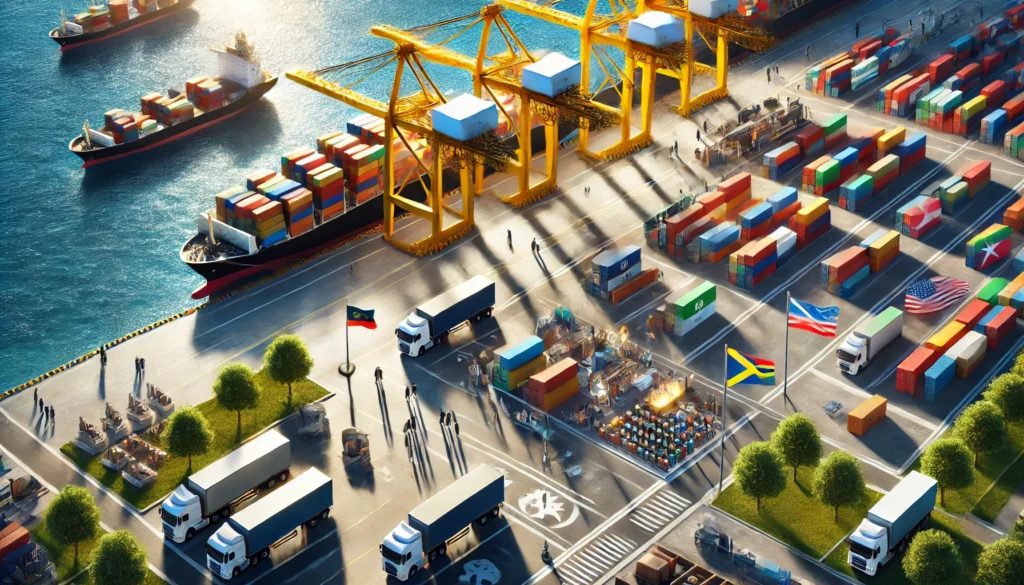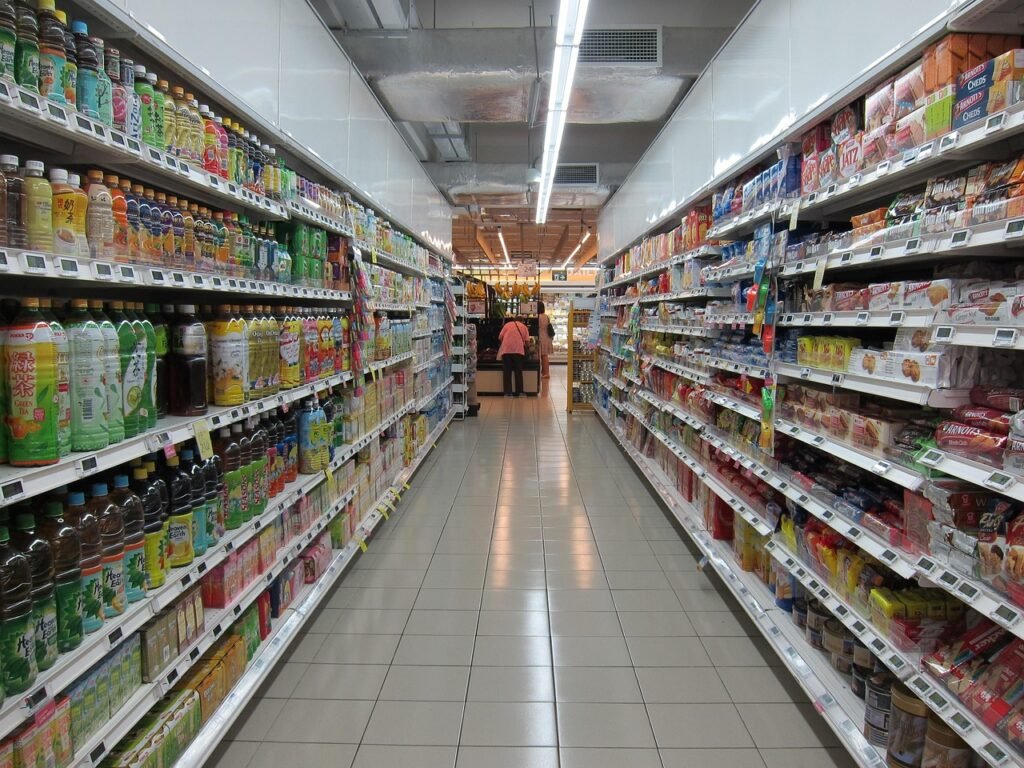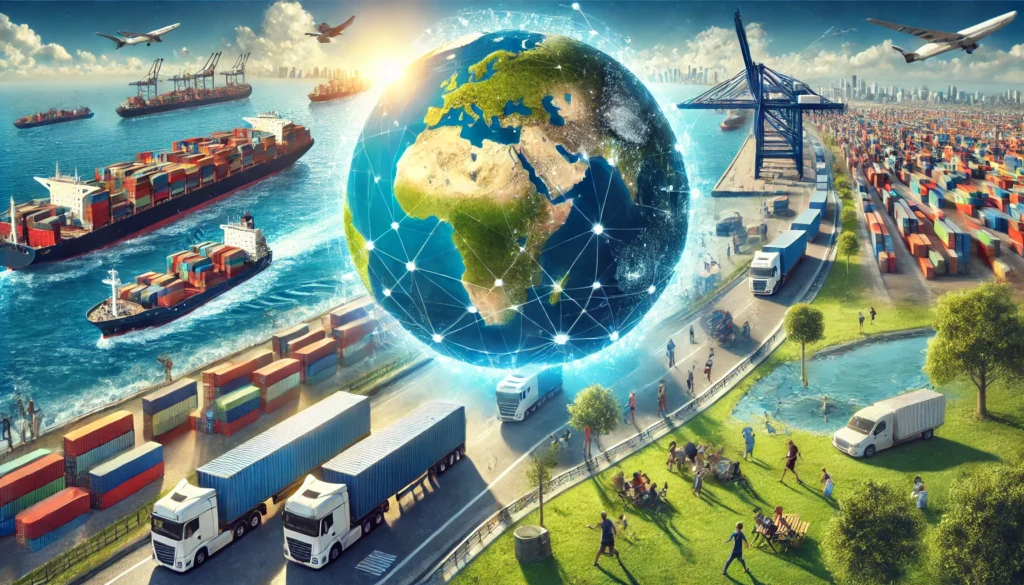Wonder why prices jump or jobs disappear? It may come down to tariffs vs free trade benefits.
At the heart of this debate are two contrasting approaches: tariffs and free trade. While politicians and economists argue fiercely about which system is better, you might be asking yourself, “What does this mean for me?” The truth is, these policies have a direct impact on your wallet, your job, and even the products you can buy. But which one actually benefits you more? Let’s dive into the intricacies of tariffs vs. free trade and uncover how they shape our everyday lives and economic futures.
In this blog post, we’ll explore the fundamentals of tariffs and free trade, compare their economic effects, and examine their implications from both consumer and business perspectives. We’ll also look at the long-term impacts these policies can have on national and global economies. By the end, you’ll have a clearer understanding of how these complex systems affect you personally and be better equipped to navigate the ever-changing landscape of international trade. 🧭📊
Understanding Tariffs

A. Definition and purpose of tariffs
Tariffs are taxes on imported goods. They make foreign products cost more than local ones. This protects local industries. In the debate over tariffs vs free trade benefits, tariffs aim to help local jobs and businesses. Tariffs also serve other goals:
- Protection of domestic industries
- Revenue generation for the government
- Trade policy leverage in international negotiations
- Safeguarding national security interests
| Tariff Type | Description | Example |
|---|---|---|
| Ad Valorem | Percentage of product value | 10% on imported cars |
| Specific | Fixed amount per unit | $5 per barrel of oil |
| Compound | Combination of ad valorem and specific | 5% + $2 per kg of cheese |
B. How tariffs affect consumer prices
Tariffs directly impact consumer prices by increasing the cost of imported goods. This price hike typically leads to:
- Higher retail prices for imported products
- Increased prices for domestic goods due to reduced competition
- Potential decrease in product quality as domestic producers face less pressure to innovate
C. Impact on domestic industries
Tariffs can have significant effects on domestic industries:
- Protection from foreign competition
- Increased market share for local producers
- Potential job creation in protected sectors
- Reduced incentive for innovation and efficiency improvements
D. Government revenue from tariffs
Tariffs serve as a source of government revenue, though their importance has diminished over time. The income generated from tariffs:
- Contributes to the national budget
- May be used to fund specific programs or initiatives
- Can fluctuate based on trade volumes and tariff rates
Now that we’ve covered tariffs, let’s look at free trade. This helps compare tariffs vs free trade benefits.
Free Trade Explained

Core principles of free trade
Free trade is built on several fundamental principles that aim to promote unrestricted international commerce:
- Elimination of trade barriers
- Non-discrimination
- Comparative advantage
- Market efficiency
These principles work together to create a more open and interconnected global economy. Let’s explore each in more detail:
| Principle | Description |
|---|---|
| Elimination of trade barriers | Removal of tariffs, quotas, and other restrictions |
| Non-discrimination | Equal treatment of domestic and foreign goods |
| Comparative advantage | Countries specialize in products they can produce most efficiently |
| Market efficiency | Competition drives innovation and optimal resource allocation |
Benefits for consumers
Free trade offers numerous advantages to consumers:
- Lower prices due to increased competition
- Greater product variety and choice
- Access to goods not available domestically
- Improved quality as companies compete globally
Opportunities for businesses
Businesses also stand to gain significantly from free trade:
- Expanded market access
- Increased economies of scale
- Access to cheaper inputs and raw materials
- Incentives for innovation and efficiency
Global economic growth
Free trade contributes to overall global economic growth by:
- Encouraging specialization and efficiency
- Fostering technology transfer and knowledge sharing
- Promoting foreign investment
- Stimulating competition and innovation
These factors help grow the global economy. To see tariffs vs free trade benefits, we’ll look at real examples.
Comparing Economic Effects

Job creation and loss
The impact of tariffs and free trade on employment is a complex issue:
| Aspect | Tariffs | Free Trade |
|---|---|---|
| Short-term | May protect domestic jobs | Can lead to job losses in certain sectors |
| Long-term | Can stifle job growth | Often creates more diverse job opportunities |
| Skill demand | May preserve traditional jobs | Tends to increase demand for skilled workers |
While tariffs can temporarily safeguard jobs in protected industries, they often lead to higher costs for consumers and businesses, potentially causing job losses in other sectors. Free trade, on the other hand, may initially disrupt some industries but generally fosters economic growth and job creation in the long run.
Innovation and competition
Free trade typically stimulates innovation and competition by:
- Encouraging companies to invest in R&D to stay competitive
- Facilitating the exchange of ideas and technologies across borders
- Providing access to a wider range of resources and talent
Tariffs, conversely, can shield domestic companies from international competition, potentially reducing their incentive to innovate and improve efficiency.
Market access and trade relationships
Free trade agreements often result in:
- Expanded market opportunities for businesses
- Stronger diplomatic ties between nations
- Increased cultural exchange and understanding
Tariffs, while potentially beneficial for specific industries, can strain international relationships and limit market access for domestic companies seeking to expand globally.
National economic security
Now that we’ve examined the effects on jobs, innovation, and market access, let’s consider how tariffs and free trade impact national economic security. This aspect is crucial for understanding the broader implications of trade policies on a country’s overall economic well-being.
Consumer Perspective

A. Product choices and availability
When it comes to product choices and availability, free trade generally offers consumers a wider array of options. Without tariffs, consumers can access goods from around the world, leading to:
- Increased product variety
- Access to specialized or unique items
- Greater competition among brands
In contrast, tariffs can limit product choices by:
- Reducing imports of certain goods
- Favoring domestic products over international options
- Potentially decreasing overall market competition
| Aspect | Free Trade | Tariffs |
|---|---|---|
| Product Variety | High | Limited |
| International Brands | Readily available | Less accessible |
| Seasonal Availability | Year-round access | May be restricted |
B. Cost of goods
The cost of goods is significantly impacted by trade policies. Free trade typically results in lower prices for consumers due to:
- Reduced or eliminated import taxes
- Increased competition driving prices down
- More efficient global supply chains
Tariffs, on the other hand, often lead to higher prices because:
- Import taxes are passed on to consumers
- Reduced competition allows domestic producers to raise prices
- Supply chain disruptions can increase costs
C. Quality and safety standards
While free trade can bring a wider range of products, it also raises concerns about quality and safety standards. Consumers may benefit from:
- Access to high-quality international products
- Exposure to innovative technologies and designs
However, they should be aware of:
- Potential variations in safety standards across countries
- The need for robust international quality control measures
Tariffs, while potentially limiting choices, can sometimes ensure:
- Stricter adherence to domestic safety standards
- Greater control over product quality
Ultimately, the impact on quality and safety depends on the effectiveness of regulatory bodies and international trade agreements in maintaining standards across borders.
Business Implications

Market expansion opportunities
In the realm of international trade, businesses face unique opportunities and challenges. When it comes to market expansion, the presence or absence of tariffs can significantly impact a company’s growth strategy.
Free Trade Benefits:
- Easier access to foreign markets
- Reduced costs for international expansion
- Increased consumer base potential
Tariff Challenges:
- Higher entry barriers to new markets
- Increased costs of doing business abroad
- Potential retaliation from trade partners
Supply chain considerations
The global supply chain is intricately connected, and trade policies play a crucial role in shaping its efficiency and cost-effectiveness.
| Aspect | Free Trade | Tariffs |
|---|---|---|
| Sourcing | Access to diverse suppliers | Limited supplier options |
| Costs | Lower material and component costs | Increased input expenses |
| Flexibility | Adaptable supply networks | Rigid, localized supply chains |
Competitive advantage
Businesses must navigate the trade landscape to maintain and enhance their competitive edge. Free trade often fosters innovation and efficiency, while tariffs can protect domestic industries but may lead to complacency.
Adaptation to changing trade policies
In today’s dynamic global economy, businesses must remain agile and responsive to evolving trade policies. This involves:
- Diversifying supply chains to mitigate risks
- Investing in local production facilities in key markets
- Developing flexible pricing strategies to absorb tariff impacts
- Engaging in trade policy advocacy to shape favorable outcomes
As we explore these business implications, it becomes clear that both tariffs and free trade have far-reaching effects on companies’ operations and strategies. Next, we’ll examine the long-term economic impacts of these trade policies on a broader scale.
Long-term Economic Impacts

GDP growth
Long-term economic impacts of tariffs and free trade significantly affect GDP growth. Free trade generally leads to higher GDP growth rates due to increased market access and efficient resource allocation. Here’s a comparison of GDP growth under different trade policies:
| Trade Policy | Short-term GDP Growth | Long-term GDP Growth |
|---|---|---|
| Tariffs | May boost temporarily | Often slower |
| Free Trade | Initial adjustment | Typically higher |
Countries embracing free trade tend to experience:
- Increased productivity
- Enhanced competition
- Access to larger markets
- More foreign direct investment
Wage levels
Trade policies directly influence wage levels across various sectors:
- Free trade often leads to higher overall wages due to increased productivity
- Tariffs may protect certain industries, temporarily maintaining higher wages for those workers
- In the long run, free trade tends to equalize wages across trading partners
Industry specialization
Long-term trade policies shape industry specialization:
- Free trade encourages countries to focus on their comparative advantages
- Tariffs can artificially maintain less efficient industries
- Specialization leads to increased productivity and innovation
International cooperation
Trade policies significantly impact international relations:
- Free trade fosters diplomatic ties and reduces conflicts
- Tariffs can lead to trade wars and strained international relationships
- Cooperation through free trade agreements often extends beyond economic matters
Technological advancements
Trade policies influence the pace of technological progress:
- Free trade facilitates the exchange of ideas and technologies
- Competition in open markets drives innovation
- Protectionist policies may slow down technological adoption
In the long run, free trade tends to accelerate technological advancements across industries, leading to improved productivity and economic growth. This interconnectedness of global markets fosters a more dynamic and innovative economic environment. For more insights like this, explore the latest posts on our Investillect blog.
Conclusion

The fight over tariffs vs free trade benefits affects everyone—shoppers, workers, and companies. Tariffs protect local industries and raise money for governments, but they often push prices up and can spark trade fights. Free trade boosts competition, cuts prices, and grows the economy, but some local industries may struggle.
Ultimately, the choice between tariffs and free trade depends on a nation’s economic goals and circumstances. As consumers and businesses, it’s crucial to stay informed about trade policies and their potential impacts. By understanding these complex issues, we can make more informed decisions and engage in meaningful discussions about the future of global trade and its effects on our daily lives. Here are some government resources to learn more about tariffs:
| Region | Agency/Resource | Key Info |
|---|---|---|
| US | U.S. International Trade Commission (USITC) | Harmonized Tariff Schedule – classification & tariff rates for U.S. imports. |
| US | U.S. Customs and Border Protection (CBP) | Import/export procedures, duty collection, and enforcement. |
| US | U.S. Trade Representative (USTR) | Trade policy, tariff negotiations, and trade agreements. |
| US | International Trade Administration (USITA) | Tariff info by country, export guides, and market intelligence. |
| Global | World Trade Organization (WTO) | Global tariff schedules by country. |
| Global | Market Access Map (ITC) | Compare MFN, applied, and preferential tariff rates globally. |
| Canada | Canada Border Services Agency (CBSA) | Tariff info and classification for Canadian imports. |
| EU | TARIC – EU Tariff Database | EU customs tariffs and trade measures. |

